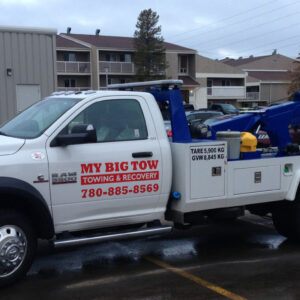Trees aren’t just pretty—they’re powerful. They shade our homes, clean the air, boost property value, and bring nature closer to our doorsteps. But just like anything else on your property, trees need care. That’s where tree service come in.
Whether it’s pruning, removal, planting, or emergency care, a professional tree service keeps your green giants safe, strong, and stunning. In this complete guide, we’ll break down everything you need to know—from routine maintenance to major tree projects.
Table of Contents
-
What Is Tree Service?
-
Why Tree Care Is Essential
-
Common Types of Tree Services
-
Tree Pruning & Trimming
-
Tree Removal
-
Stump Grinding
-
Tree Planting
-
Emergency Tree Service
-
-
Tree Health Inspections
-
How to Spot a Problem Tree
-
When to Call a Tree Service
-
DIY vs Professional Tree Care
-
How to Choose a Reliable Tree Service Company
-
Average Costs of Tree Services
-
Safety First: Hazards of Ignoring Tree Problems
-
Benefits of Regular Tree Maintenance
-
Environmental Benefits of Healthy Trees
-
Tree Services for Commercial Properties
-
Seasonal Tree Care Tips
-
Conclusion
-
FAQs
What Is Tree Service?
Tree service refers to a wide range of professional care for trees on residential or commercial properties. From planting new trees to removing hazardous ones, tree service companies handle all things tree-related using specialized tools and certified knowledge.
Why Tree Care Is Essential
Think of tree care like a check-up for your green giants. Without regular attention, trees can:
-
Become diseased or infested
-
Drop limbs unexpectedly
-
Fall during storms
-
Damage homes or power lines
-
Lower your property’s curb appeal
Regular maintenance keeps them healthy and safe—and you stress-free.
Common Types of Tree Services
Tree Pruning & Trimming
This involves cutting away dead, diseased, or overgrown branches to improve:
-
Tree health
-
Sunlight exposure
-
Air circulation
-
Aesthetic appearance
-
Safety near power lines or structures
Tree Removal
Sometimes, a tree is too damaged or dangerous to save. Removal may be necessary when:
-
It’s dead or dying
-
It leans dangerously
-
Roots threaten foundations
-
Storms have severely damaged it
Stump Grinding
Leftover stumps can be ugly, hazardous, and home to pests. Grinding removes them below ground level, making your yard safer and more attractive.
Tree Planting
Tree services can help select and plant the right species for your soil, climate, and long-term goals—ensuring growth and longevity.
Emergency Tree Service
After storms or unexpected damage, quick response is critical. Emergency services handle:
-
Fallen trees
-
Broken limbs
-
Trees on homes or power lines
Tree Health Inspections
Certified arborists conduct health assessments to check:
-
Root health
-
Fungal growth
-
Pest infestations
-
Trunk integrity
-
Overall vitality
Catching issues early can save a tree and prevent expensive damage later.
How to Spot a Problem Tree
Keep an eye out for warning signs:
-
Cracks in the trunk
-
Leaning posture
-
Dead or brittle branches
-
Fungal growth near roots
-
Peeling bark
-
Sparse leaves or premature leaf drop
If you notice these, it’s time to call a pro.
When to Call a Tree Service
Don’t wait until a tree becomes dangerous. Call a tree service if:
-
A tree hasn’t been trimmed in years
-
You notice decay or unusual growth
-
A tree leans more than usual
-
There’s storm damage
-
You’re planning construction near trees
DIY vs Professional Tree Care
While you can handle small pruning jobs yourself, bigger tasks require pros. Here’s why:
| DIY | Professional |
|---|---|
| Cheaper for light trimming | Safer for large or risky trees |
| Limited by your tools & knowledge | Has insurance and specialized equipment |
| Risk of injury or tree damage | Expertise ensures proper tree care |
For anything involving height, hazards, or health—leave it to the experts.
How to Choose a Reliable Tree Service Company
Look for:
-
Certified arborists
-
Insurance and licensing
-
Years of experience
-
Local reputation (reviews)
-
Written estimates
-
Clear communication
Pro tip: Avoid door-to-door offers after storms—they’re often scams.
Average Costs of Tree Services
Tree service costs depend on the job size, complexity, and tree condition:
| Service | Average Cost |
|---|---|
| Tree trimming | $200 – $800 |
| Tree removal | $400 – $2,000+ |
| Stump grinding | $100 – $500 |
| Emergency removal | $1,000 – $3,500+ |
| Tree planting | $150 – $500 per tree |
Always get multiple quotes and check what’s included.
Safety First: Hazards of Ignoring Tree Problems
Neglected trees can cause:
-
Falling limbs
-
Roof damage
-
Blocked driveways
-
Injuries or fatalities
-
Power outages
Don’t wait until it’s too late—tree care is a safety measure.
Benefits of Regular Tree Maintenance
✅ Enhances property value
✅ Prevents costly damage
✅ Supports healthy growth
✅ Makes trees more storm-resistant
✅ Keeps your yard beautiful
Environmental Benefits of Healthy Trees
Trees are nature’s MVPs. When well-maintained, they:
-
Absorb CO₂
-
Provide oxygen
-
Offer wildlife habitat
-
Reduce erosion
-
Cool urban heat zones
Healthy trees = a healthier planet.
Tree Services for Commercial Properties
Businesses benefit too. Tree services keep commercial landscapes:
-
Safe for customers
-
Visually appealing
-
In compliance with local ordinances
-
Free of liability risks
Whether it’s an apartment complex, office park, or retail center—trees matter.
Seasonal Tree Care Tips
-
Spring: Inspect for winter damage, prune early
-
Summer: Water during drought, monitor pests
-
Fall: Remove dead limbs, prep for winter
-
Winter: Trim while trees are dormant, remove snow-weighted limbs
Timing your tree care boosts effectiveness and tree health.
Conclusion
Trees are more than just background scenery—they’re living assets that need attention. Whether it’s routine maintenance or an emergency call, professional tree services ensure your trees stay healthy, your property stays safe, and your outdoor spaces thrive.
From trimming to removal, inspections to planting, partnering with a trusted tree service can make all the difference. So don’t wait until a limb crashes down—take care of your trees, and they’ll take care of you.
FAQs
1. How often should I have my trees inspected?
At least once a year by a certified arborist—more often if you notice changes.
2. Can tree services help save a dying tree?
Yes! Early intervention, pruning, fertilizing, or pest control can often revive a struggling tree.
3. Is it okay to prune trees any time of year?
Some trees tolerate year-round pruning, but late winter to early spring is best for most.
4. Do I need a permit to remove a tree?
It depends on your local laws. Always check with your city or county before removal.
5. What’s the best time to plant a tree?
Spring and fall are ideal, giving roots time to establish before extreme heat or cold.








